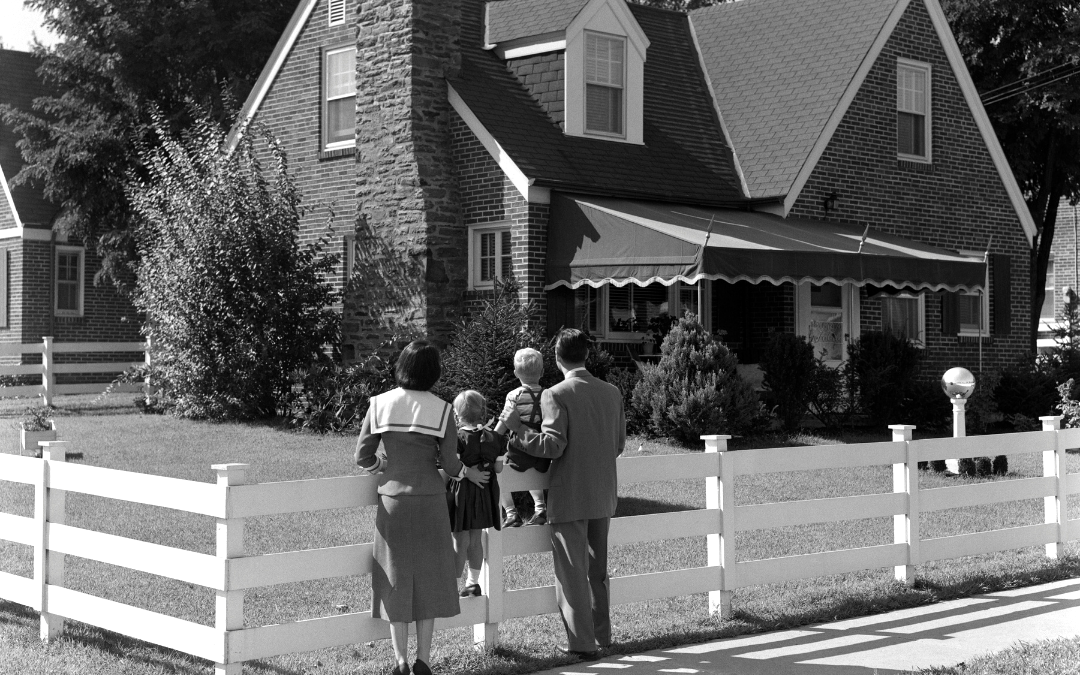The history of mortgages in the United States can be traced back to the colonial era, when land ownership was a key aspect of American society. In the early days, land was obtained through grants from European governments or by purchase from Native American tribes. However, these methods of acquisition were often costly and time-consuming, leading to the development of more efficient ways to finance land purchases.
One of the first forms of mortgage in the United States was the “bond for deed” system, which was used in the late 1700s and early 1800s. Under this system, a borrower would make a down payment on a piece of property and then make payments over time until the full purchase price was paid. The borrower would then receive a bond for the property, which could be used as collateral for future borrowing.
The modern mortgage system, as we know it today, began to take shape in the mid-19th century. The Homestead Act of 1862 provided 160 acres of public land to settlers who were willing to live on and improve the land for at least five years. The act helped to spur westward expansion and increase the number of homeowners in the United States.
The modern mortgage system, as we know it today, began to take shape in the mid-19th century. The Homestead Act of 1862 provided 160 acres of public land to settlers who were willing to live on and improve the land for at least five years. The act helped to spur westward expansion and increase the number of homeowners in the United States.
The modern mortgage system, as we know it today, began to take shape in the mid-19th century. The Homestead Act of 1862 provided 160 acres of public land to settlers who were willing to live on and improve the land for at least five years. The act helped to spur westward expansion and increase the number of homeowners in the United States.
In the late 19th and early 20th centuries, the mortgage industry began to expand and diversify. Banks and other financial institutions began to offer mortgages to a wider range of borrowers, and the government created new programs to encourage homeownership. The Federal Housing Administration (FHA) was established in 1934 to provide mortgage insurance and encourage lending to low- and moderate-income families. The Veterans Administration (VA) also provided mortgage assistance to veterans returning from World War II.
In the post-war era, the mortgage industry continued to grow and evolve. The introduction of the 30-year fixed-rate mortgage in the 1950s made it easier for borrowers to afford homes, and the government created new programs to encourage lending in urban and rural areas. In the 1960s and 1970s, the government introduced new regulations to protect borrowers and stabilize the housing market.
One of the most significant was the creation of the Federal National Mortgage Association (FNMA), also known as Fannie Mae, in 1938. Fannie Mae was established as a government-sponsored enterprise (GSE) to purchase mortgages from lenders, providing them with liquidity and allowing them to make more loans. Fannie Mae also helped to standardize the mortgage market by issuing securities backed by pools of mortgages, which were then sold to investors. This helped to make mortgages more accessible to a wider range of borrowers by providing a secondary market for the loans.
Another important development was the creation of the Federal Home Loan Mortgage Corporation (FHLMC), also known as Freddie Mac, in 1970. Like Fannie Mae, Freddie Mac was established as a GSE to purchase mortgages from lenders and provide liquidity to the market. Freddie Mac also helped to standardize the mortgage market by issuing securities backed by pools of mortgages.
However, the history of mortgages in the United States is not without its challenges. The subprime mortgage crisis of the late 2000s was caused by a combination of factors, including lax lending standards, a lack of regulation, and speculation in the housing market. The crisis led to widespread foreclosures, a sharp decline in home values, and a severe recession.
During the 1990s and early 2000s, the introduction of new technologies and financial products, such as adjustable-rate mortgages and interest-only loans, helped to fuel a boom in the housing market. However, these loans often carried high levels of risk and were often targeted at borrowers with poor credit. When the housing market collapsed in 2008, many borrowers with subprime loans were unable to make their payments, leading to widespread foreclosures and a severe recession.
The response to the subprime mortgage crisis was the Dodd-Frank Wall Street Reform and Consumer Protection Act of 2010, which was designed to strengthen regulation and oversight of the financial industry and protect consumers. The act created the Consumer Financial Protection Bureau (CFPB) to oversee mortgages and other consumer financial products, and also implemented new rules for lenders and mortgage servicers.
In conclusion, the history of mortgages in the United States is a story of progress and innovation, but also challenges and setbacks. The mortgage industry has evolved over time to meet the needs of borrowers and the economy, but it is also subject to the broader forces of the economy and is prone to booms and busts. Today, the industry continues to adapt and change in response to the latest trends and challenges.
Written with the help of ChatGPT.
![]()
“SELFi started with a simple idea: to help homeowners obtain the lowest interest rates on their mortgage. That’s it.”

Compare wholesale mortgage rates easily using AccuRate.

